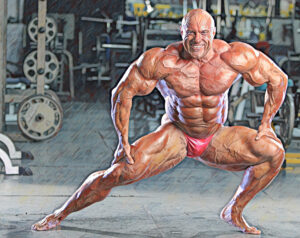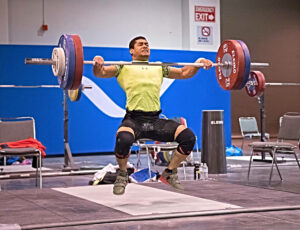
Muscle Fiber Typing for Program Design
The Strength Sensei’s views on tonic and phasic muscles
One of the pioneers of functional training is Professor Vladimir Janda. Born in Czechoslovakia in 1928, Janda contracted polio at the age of 15 and was unable to walk for two years. Janda became a neurologist and exercise physiologist who did revolutionary work in physical medicine.
At 21, Janda published his first book about muscle testing and function, then wrote 15 more, along with over 200 papers. He founded the rehabilitation department at Charles University Hospital in Prague, Czechoslovakia, and earned the nickname “The Father of Czech Rehabilitation.” Among his contributions was identifying muscular imbalances associated with chronic pain: Upper Crossed, Lower Crossed, and Layer Syndrome.
In the 60s, Janda used two terms about how muscles function: tonic and phasic. Tonic muscles are postural muscles that are designed to primarily provide stability and resist gravity, and as such, are often called anti-gravity muscles. Typically, these muscles produce extension, cross only one joint, and contain primarily slow-twitch (Type I) muscle fibers. This fiber makeup makes them more resistant to fatigue. Examples include the gastrocnemius (upper calf), psoas, and pectoralis major.
In contrast, phasic muscles are designed to produce movement, usually cross multiple joints, produce flexion, and contain mainly fast-twitch (Type II) muscle fibers. This fiber makeup gives them less endurance but makes them more powerful. Examples include the deltoids and triceps.
From a corrective exercise perspective, Janda believed tonic muscles are susceptible to being chronically shortened and stretching is often needed. Phasic muscles are susceptible to being chronically weak, which Janda described as being inhibited, and strengthening is often required.
 Weightlifting success is influenced by the ratio of fast twitch to slow twitch muscle fibers. (This photo by Viviana Podhaiski, LiftigLife.com; lead photo by Miloš Šarčev)
Weightlifting success is influenced by the ratio of fast twitch to slow twitch muscle fibers. (This photo by Viviana Podhaiski, LiftigLife.com; lead photo by Miloš Šarčev)
The Strength Sensei believed training could influence muscle performance from a tonic or phasic perspective. “I tested the neck extensor strength of a world-class speedskater and a world-class hammer thrower,” says the Strength Sensei. “Using a weight representing 85 percent of their maximum for a single repetition, the hammer thrower completed three reps and the speedskater did 200 reps! Yes, 200 reps! Again, these athletes were testing the strength of the same muscles using the same exercise. Would these results also suggest that all the muscles in the speed skater’s body are tonic, and all the muscles in the hammer thrower are phasic? Obviously not – their performance on this test with these specific muscles was a result of their training.”
The takeaway is that Yanda’s description of how muscles function has value from a corrective exercise perspective, but that training can influence how these muscles perform in terms of strength and endurance. (TSS)
